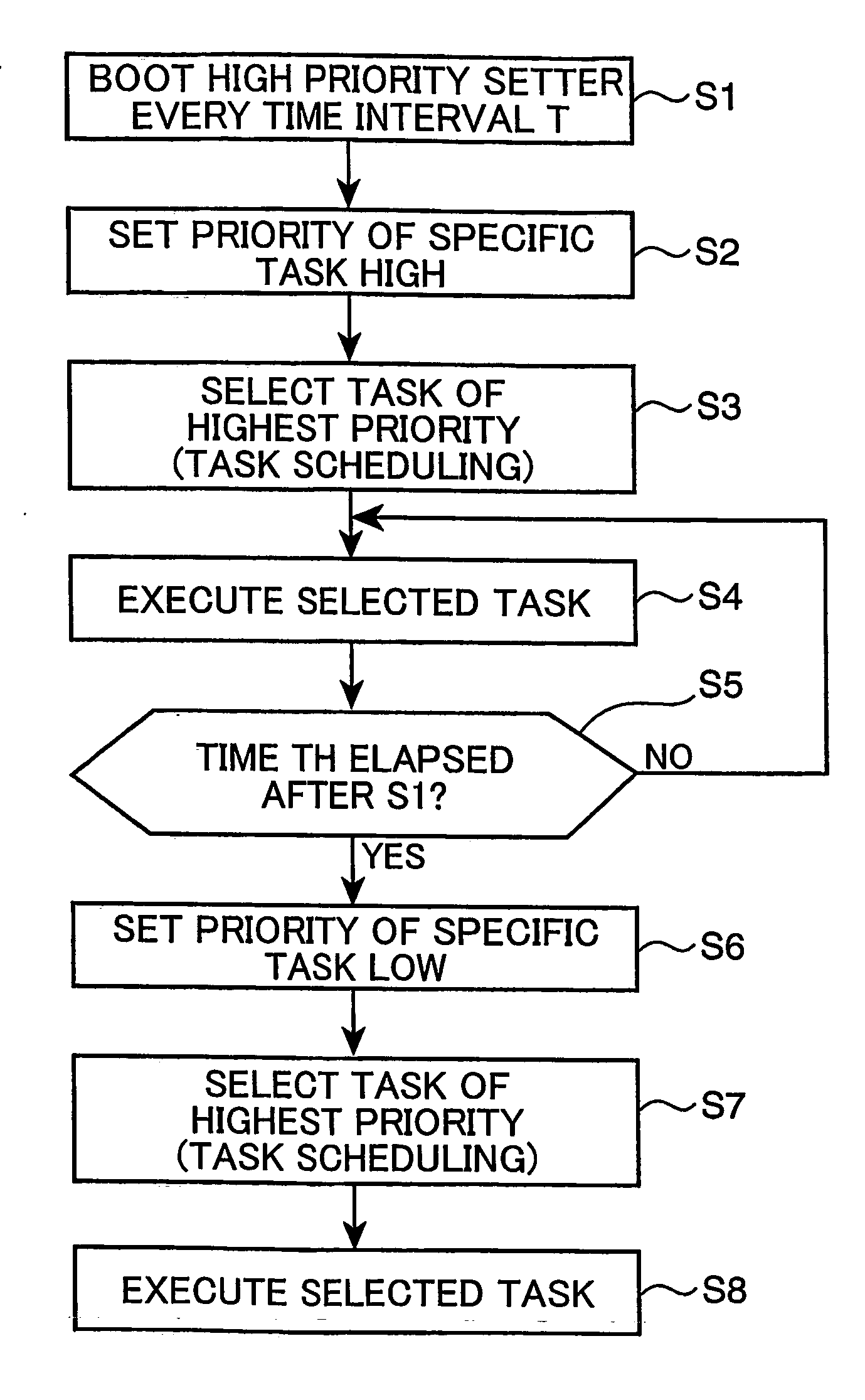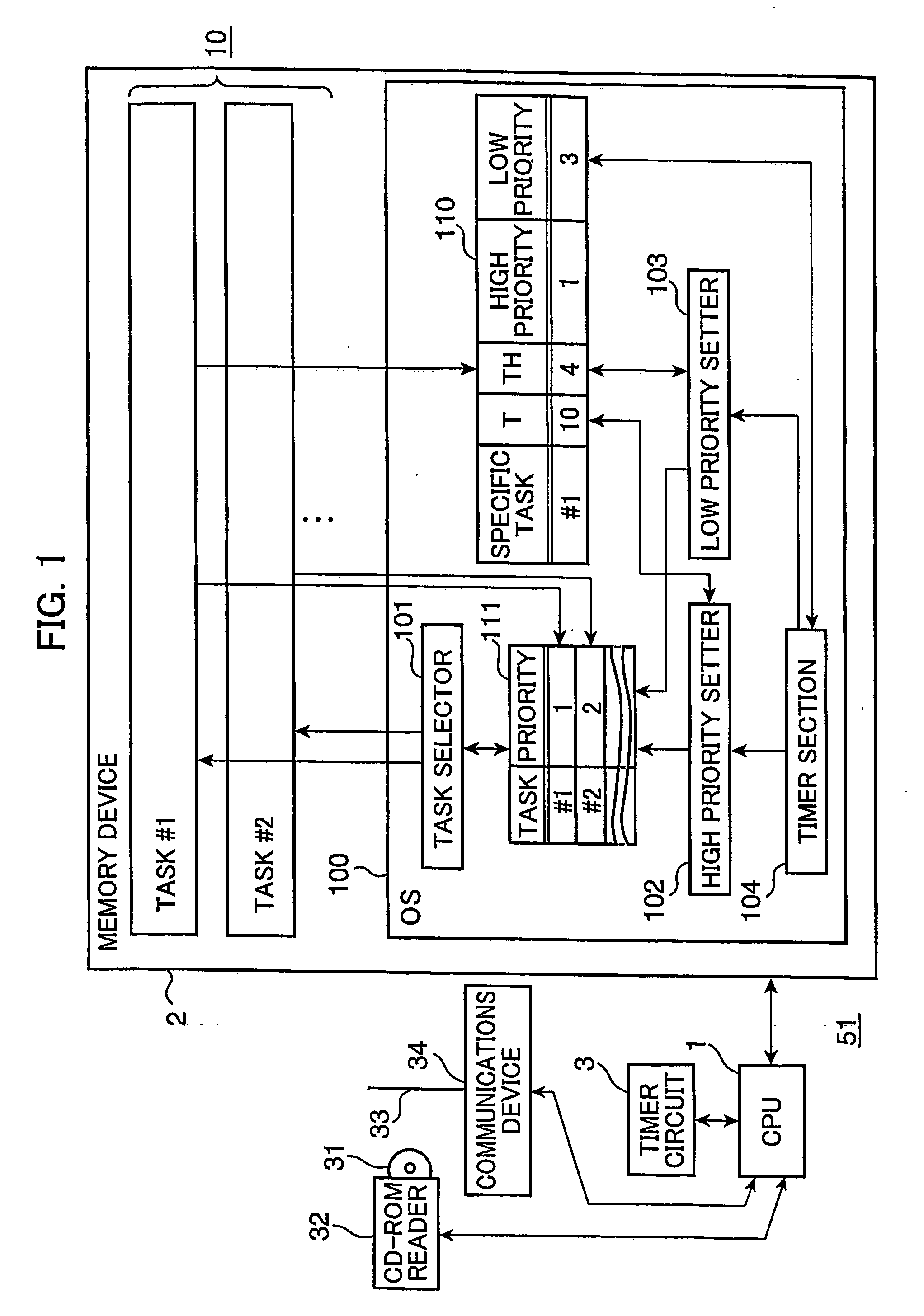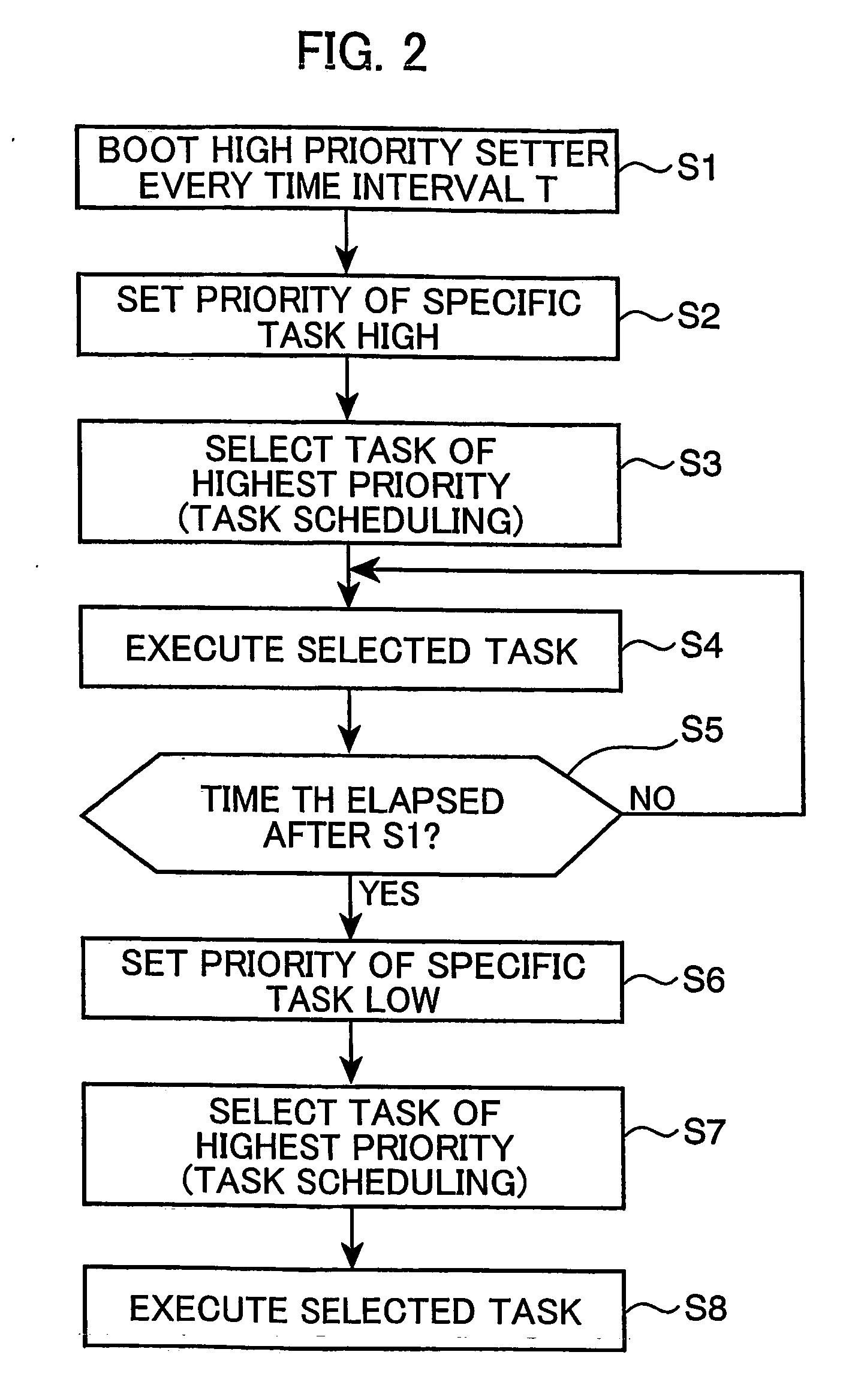Task scheduling device, method, program, recording medium, and transmission medium for priority-driven periodic process scheduling
a technology of task scheduling and process scheduling, applied in the direction of multi-programming arrangements, program control, instruments, etc., can solve the problems of affecting the efficiency of cpu resources, user discomfort, and inability to execute specific tasks that are controlled to wake up and sleep cyclically, so as to achieve effective utilization of cpu resources, low priority, and balanced manner
- Summary
- Abstract
- Description
- Claims
- Application Information
AI Technical Summary
Benefits of technology
Problems solved by technology
Method used
Image
Examples
example of first embodiment
[0065]FIG. 4 is a block diagram showing an example of the task scheduling device 51 according to the first embodiment. A computer equipped with the task scheduling device 51A comprises an input device 4, an input interface 5, and an output device 6, in addition to components equivalent to the components of the computer shown in FIG. 1. The input device 4 is a keyboard, and the output device 5 is a display for outputting audio and displaying images, for instance.
[0066] An OS 100A for realizing the task scheduling device 51A in cooperation with a CPU 1 includes a buffer manager 130 and a device driver 140, in addition to components equivalent to the components of the OS 100 (see FIG. 1). The buffer manager 130 manages a buffer 131 provided in a memory region of a memory device 2. The buffer 131 temporarily stores data sent from a task #1 before outputting to the output device 5. The buffer manager 130 is constructed as a system call, for instance. In this example, in the case where d...
first embodiment
Modification of First Embodiment
[0082]FIG. 10 is a block diagram showing a configuration of a modification of the task scheduling device as the first embodiment. The task scheduling device 51B is different from the task scheduling device 51 (see FIG. 1) in that a high priority periodical setting section 102A and a low priority periodical setting section 103A (hereinafter, simply called as “high priority setter 102A” and “low priority setter 103A”, respectively) corresponding to the high priority setter 102 and the low priority setter 103 of the task scheduling device 51 are provided in a task #1, and that a timer section 104A is provided in place of the timer section 104 in accordance with the alteration of the arrangement. The task scheduling device 51B can be realized by cooperation of respective components of a program including the high priority setter 102A and the low priority setter 103A in the task #1, and respective components of an OS 100B with a CPU 1.
[0083] The high prio...
second embodiment
Various Modifications of Second Embodiment
[0103] There are proposed various modifications as shown in FIGS. 15 through 19, other than the embodiment shown in FIG. 12, as arrangements relating to a processing of switching the priority of the specific task from a high priority to a low priority. The task scheduling device 52A shown in FIG. 15 is configured such that a processed amount judger 120A is provided in an OS 100D and a task #1 in a bridging manner. Specifically, a processed amount resetter 121A is provided in the OS 100D, and a processed amount comparator 122 is provided in the task #1. Similarly to the timer section 104, a timer section 104C is realized as an interrupt handler which executes an interrupt processing every time interval T0, for instance. The timer section 104C boots the processed amount resetter 121A in the OS 100D every time interval T. Alternatively, the processed amount resetter 121A itself may be realized as an interrupt handler which executes an interrupt...
PUM
 Login to View More
Login to View More Abstract
Description
Claims
Application Information
 Login to View More
Login to View More - R&D
- Intellectual Property
- Life Sciences
- Materials
- Tech Scout
- Unparalleled Data Quality
- Higher Quality Content
- 60% Fewer Hallucinations
Browse by: Latest US Patents, China's latest patents, Technical Efficacy Thesaurus, Application Domain, Technology Topic, Popular Technical Reports.
© 2025 PatSnap. All rights reserved.Legal|Privacy policy|Modern Slavery Act Transparency Statement|Sitemap|About US| Contact US: help@patsnap.com



